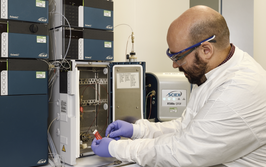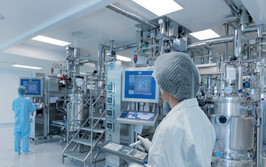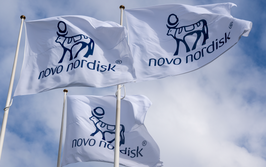Laser diffraction and automated imaging: complementary techniques for nasal spray development

contributed by Malvern Panalytical |
Introduction
Nasal spray products are increasingly valued for delivering systemic as well as locally-acting therapies, most notably hormone and migraine treatments. The large surface area and rich blood supply of the nasal passages aid the rapid absorption of drug entities, with their close proximity to the central nervous system being of particular benefit.
The regulatory guidance for nasal sprays emphasizes the importance of testing the device and the formulation together since it is in combination that they define the unique characteristics of the delivered dose. The success of drug delivery is strongly influenced by the particle size of the delivered droplets, and for suspension formulations the particle size of the suspended active as well.
According to the guidance, delivered droplet size 'is an important property influencing the nasal deposition of aerosols and sprays'. Very fine droplets, lying in the sub-10 micron range, are likely to be drawn into the lungs while those that are excessively large may remain at the front of the nasal passages rather than depositing at the intended site. The particle size of a suspended active pharmaceutical ingredient (API) potentially influences dissolution rate in vivo, and also availability to sites of action within the nose. The recommendation is that particle size should be measured pre- and post- actuation to ensure that requirements for clinical efficacy are met and that the API particles are unchanged by the delivery process.
Laser diffraction is the recommended technique for measuring droplet size, while imaging or microscopy methods are the usual choice for analyzing suspended API, a task that can be complicated by the presence of visually similar excipient particles. This paper reviews the use of laser diffraction (Spraytec, Malvern Instruments) and automated imaging coupled with spectroscopic identification (Morphologi G3-ID, Malvern Instruments) in the development of nasal spray products, showing how the two techniques combine to provide the understanding and regulatory data required to develop and optimize nasal spray products in a cost and time-efficient way.
Log in or register to read this article in full and gain access to The Medicine Maker’s entire content archive. It’s FREE!



















